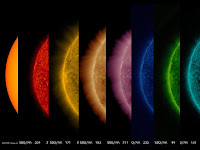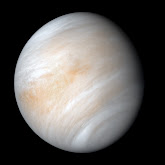Imagine you’re on vacation, and you decide to splurge and stay at a 5-star hotel instead of the usual 3 star one, making you acutely aware of the luxury you’ve been missing out on. But, what about a 7-star hotel!? Well, “lavish” and “extravagant” would be understatements. So what would actually happen if you visited a 7 star-hotel?
It’s time to show you. But before I continue, let me know in the comments what you think a 7-star hotel would be like. Let’s take the Burj Al Arab hotel in Dubai. It’s recognized as a 7-star hotel. Though, it’s a 5-star hotel. But the way it got its impressive rating is pretty interesting. A British journalist visited the luxurious hotel during a press trip. When he left, he was so impressed by the standards, service, and amenities, that he described it as a 7 star experience.
Ever since, the exaggerated hotel rating has been haunting the Burj Al Arab, but in a good way.
The Burj Al Arab, which means “the Arabian Tower”; has been voted as the best hotel in the world. And when we take a mini trip inside, you’ll understand why. It took approximately 5 years to build, and was finished in 1999. The reason it took so long to complete is that it was constructed on an artificial island.
It has a private bridge that connects the hotel to the land, but only a few people have access to it; for example, hotel guests and staff. It also has a very distinctive shape. The Architect designed it to resemble the sail of a ship. Do you see it now? And on its roof.
it has a helipad for the private jet commuters. The hotel became so famous, that it’s now the symbol of Dubai.
Just like the Eiffel Tower is to France and the Statue of Liberty to New York. Imagine you just landed at the Dubai International Airport, and you have a room booked in the Burj Al Arab hotel. Here’s how things would go: You’ll be given an option to either ride to the hotel or take a private helicopter. Both transportations are equally luxurious.
So, let’s assume that you’d choose the ride. The moment you exit the airport, a shiny white Rolls Royce with a chauffeur will be waiting for you. As the car crosses the legendary bridge, you’ll begin to understand what the hotel is all about. The view is magical. You can see the waters and the palm trees sitting around the base of the building. The sail-like structure is built on sand. It’s just over 1000 feet tall, with 250 concrete columns.
Each of them is approximately 5 feet in diameter, and they dive to 148 feet below sea-levels. You’ll see the columns the moment you enter the magical building. But you’ll soon get distracted by the 258,000 square feet of marble on the floor and walls.
It’s called Statuario marble, and it’s the same one Michelangelo used for his Renaissance sculptures. Walking around, you’ll see flashes of real gold from every direction: In the decorations, on the furniture, even on the chandeliers.
There’s 24-carat gold leaf covering more than 22,000 square feet of the hotel’s interior. Even the borders of the TVs in your room and the mirror frames have the Midas touch. Burj Al Arab has only 202 duplex suite rooms, and some of them give their guests a rare view of Palm Jumeirah. After you’re welcomed by all the staff members at the entrance and finish your check-in; you’re provided with an exclusive butler for your suite.You won’t have to lift a finger. He’ll take you to your room and show you around. There, you’ll be met with the interior decorations that are both elegant and colorful.They’re inspired by the land, people, and culture of Dubai.

Many of the rooms have geometric patterns that resemble the ones in Ancient Greece. They chose to use large columns that add a palatial twist to the interior. But the colors are the best part.They’re inspired by fire, earth, air and water. The suites are so big, it’ll take more than 30 minutes for the butler to show you around. The smallest suite is 1,830 square feet – which is as big as a 4-bedroom house. And here’s the most interesting part. He’ll show you how everything works using the latest technology: all the buttons, knobs, bits and bobs.

If you decide to be more adventurous and book one of the Royal Suites, you’re in for a big shock. Each of the suites are approximately 8,400 square feet, and they cover the whole floor. The beds rotate to whichever position you want with the push of an electronic button. As you lie down, you’ll notice a life-size mirror on top of you that’s as big as the diameter of the mattress.The super king size beds are covered in the best quality Egyptian cotton sheets.
In order to make sure that you get top-quality sleep, the hotel does something extravagant: they present you with 17 varieties of pillows to pick from.Well, now you understand how exhausting it is to be royalty.
After you’ve chosen your comfy pillow, you move on to the bathroom. It’s decorated with colorful mosaics, and a huge jacuzzi sits in the middle. On the sink counter, there are more than 10 varieties of Hermes toiletries and perfumes. Then, the butler will offer to unpack all of your stuff while you rest. So, let’s go around and get another glimpse of the hotel.
Imagine you just left your room and are walking down the hall. Your private butler will always be there to greet you when you return. If other suites are occupied, there will be a private butler outside each of those rooms.
The hotel includes the famous award winning Talise Spa, located on the 18th floor. All of its treatment rooms include extra-large windows overlooking the ocean. But it gets even more glamorous. This palace has multiple swimming pools for its guests – both indoors and outdoors.
There are also swimming pools dedicated for women and children. The most surprising thing is that they offer a romantic moonlight swim. Let’s say you’re staying there with your partner. You can book the whole swimming pool for you and your loved one, and the hotel will arrange everything: floating candles, rose petals covering the water, champagne and strawberries.
There’s also a private beach for the guests of the hotel, which is located at the opposite side of the bridge. It includes sunbeds along with some other treatments that are complimentary.
Most 5 five-star hotels usually have two dining areas. This one has 6 restaurants and bars. I’ll take you through the best ones. Say you’ve woken up, and your butler is taking you to the restaurant on the ground floor. You have the option to either sit indoors or outdoors.
There’s a variety of dishes to pick from too; from a European breakfast to a Middle Eastern one. The best part is that everything is served on a buffet, so you can mix and match. For lunch, you’re taken to the 27th floor – The restaurants is called “Al Muntaha” which means “The highest”.
The windows start from the floor, and stretch all the way up to the ceiling. So, if you’re not a big fan of heights, it’s not the best spot for you.
It has a bluish interior that resembles the ocean, and the ceiling has green and blue secret lighting that makes you feel like you’re underwater. And if you think nothing can top that, wait for the next one.
At dinner, you can book a table at the Al Mahara, which translates to Oyster Shell. You’ll enter the dining room through a golden, shell-shaped corridor. As you walk in, you’ll be met with a giant aquarium. The tables are arranged around an oval shaped tank that’s filled with colorful corals and salt water fish.
The restaurant has a variety of dishes, but it specializes in seafood. Not surprising. Hey do you get to pick your fish to eat, and a diver will spear it for you?
A lot of people are so amazed with their experience at the Oyster Shell, that they pick the restaurant to propose to their other half. A diver will get in with the fish and pop the question. Near the restaurant, there are also a few private rooms with their own aquariums inside. They have gold shells hanging from the ceiling with special lighting. The chairs are also gold and shell-shaped. Must be Aqua man’s favorite conference room, huh?
Recently, the most luxurious bar in the world opened in the hotel, and it’s called Gold on 27. It offers unique drinks, and the trained bar tenders keep their recipes secret. Since gold is the material that signifies the hotel and its status, the whole bar is covered in it. You can even order a drink named element 79, which is a grape flavored drink filled with gold dust.
Even though it’ll certainly cost an arm and a leg to spend a weekend at this magnificent hotel, it’ll certainly be an unforgettable experience. It gives you a sense of what the glamorous lifestyle is really like.
Hey, if you learned something new today, then give the blog a like and comments it with a
friend!
Regards
Tahir Ahmad Dawood


 It speeds around the Sun every 88 days, traveling through space at nearly 29 miles (47 kilometers) per second, which is at an average speed of 105,947 miles (170,505 kilometers) per hour. faster than any other planet. Mercury spins slowly on its axis and completes one rotation every 59 Earth days. Mercury is 66.695 million km away from the Sun and 179.99 million km from Earth.
It speeds around the Sun every 88 days, traveling through space at nearly 29 miles (47 kilometers) per second, which is at an average speed of 105,947 miles (170,505 kilometers) per hour. faster than any other planet. Mercury spins slowly on its axis and completes one rotation every 59 Earth days. Mercury is 66.695 million km away from the Sun and 179.99 million km from Earth.




























































